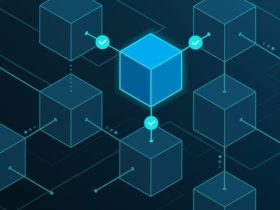In today’s high-stakes digital landscape, cybersecurity is no longer just an IT concern—it is a strategic imperative for organizations worldwide. As cyber threats continue to evolve in sophistication, industry leaders are responding with bold partnerships, significant funding initiatives, and innovative technological upgrades. This comprehensive daily briefing examines the latest developments across the cybersecurity spectrum, from AI adoption in banking security to cutting-edge enhancements in security operations, regional expansion strategies, and high-profile government contracts. Through detailed analysis and opinion-driven insights, this article explores the implications of these stories on the broader cybersecurity industry, providing valuable perspectives for security professionals, corporate decision makers, and technology enthusiasts alike.
In the following sections, we dissect five key news stories:
- AI Adoption Challenges in Banking Security
- Oman Data Park’s AI-Powered Fortinet SecOps Upgrade
- Tines Survey: Resilient Security Teams in the Face of Rising Workloads
- Observo AI’s APAC Expansion via SIS Technologies Partnership
- SealingTech’s Prototype Agreement with the Department of Defense
By analyzing these developments, we reveal how the integration of artificial intelligence (AI) into cybersecurity is redefining threat detection and mitigation while also highlighting the importance of strategic partnerships and robust funding in driving industry progress. Read on as we explore the nuances of each story, discuss their broader implications, and chart a course for the future of cybersecurity.
1. AI Adoption Challenges in Banking Security
A Double-Edged Sword for the Financial Sector
The financial sector has long been a prime target for cybercriminals, and with banks increasingly integrating AI-driven technologies, new vulnerabilities are emerging alongside transformative innovations. A recent article from CyberMagazine outlines how the rapid adoption of AI in banking, while offering enhanced efficiency and improved customer service, is also creating a complex set of security challenges.
Source: CyberMagazine
Banks are leveraging AI to automate fraud detection, personalize customer interactions, and streamline operational workflows. However, this accelerated adoption has also led to unintended security risks. As AI systems become more deeply embedded in banking operations, they open up potential attack vectors for sophisticated cyber threats. Hackers are continuously probing for weaknesses in these systems, testing the limits of machine learning algorithms, and seeking ways to exploit vulnerabilities in automated processes.
Key Issues and Concerns
-
Data Integrity and Privacy:
With AI systems processing vast amounts of sensitive customer data, ensuring data integrity and maintaining strict privacy standards has become paramount. Cybercriminals are now targeting the data flows that power these intelligent systems, aiming to intercept or manipulate financial information for their gain. -
Adversarial Attacks:
The advent of adversarial machine learning presents a particularly insidious challenge. Attackers can subtly modify input data to mislead AI algorithms, resulting in incorrect outputs that could potentially compromise the security of banking transactions. This form of attack not only undermines the reliability of AI systems but also raises concerns about the long-term resilience of automated defenses. -
System Complexity:
As banks incorporate more AI-driven solutions, the overall complexity of their IT ecosystems increases. Integrating legacy systems with modern AI frameworks creates gaps in security protocols, making it harder to maintain a unified defense posture. The interconnectivity of various systems also means that a breach in one component can quickly cascade throughout the network, amplifying the impact of any security incident.
The Broader Implications for the Banking Sector
In an op-ed-style analysis, it is clear that while AI adoption holds immense potential for revolutionizing banking security, it also demands a careful, measured approach. The key lies in developing robust security frameworks that evolve alongside AI technologies. Banks must invest not only in advanced cybersecurity measures but also in continuous monitoring and agile incident response strategies.
From a strategic perspective, this duality represents both a challenge and an opportunity. On one hand, the vulnerabilities introduced by AI adoption require enhanced vigilance, sophisticated threat intelligence, and real-time monitoring capabilities. On the other hand, the very challenges posed by AI can drive innovation, pushing banks to adopt state-of-the-art security technologies that are better suited to counteract modern threats.
My Perspective
In my view, the integration of AI in banking is a transformative development that must be approached with both optimism and caution. While the benefits are undeniable—improved efficiency, better customer experiences, and enhanced fraud detection—the associated security risks cannot be overlooked. Financial institutions need to strike a delicate balance: harnessing the power of AI to drive innovation while simultaneously fortifying their defenses against emerging cyber threats. The evolving nature of adversarial attacks underscores the need for continuous research and development in cybersecurity, ensuring that banks remain one step ahead of potential attackers.
2. Oman Data Park Boosts Cybersecurity with AI-Powered Fortinet SecOps Upgrade
A Strategic Leap in SecOps Innovation
In a bid to fortify its digital infrastructure, Oman Data Park has recently implemented an AI-powered upgrade to its security operations, leveraging Fortinet’s state-of-the-art SecOps solutions. This move, detailed in a report by TechAfricaNews, marks a significant advancement in how organizations can integrate artificial intelligence into their cybersecurity defenses to proactively mitigate threats.
Source: TechAfricaNews
Oman Data Park’s initiative centers around enhancing their Security Operations Center (SOC) capabilities by integrating AI-driven analytics and automated threat response mechanisms. Fortinet’s SecOps upgrade enables the facility to detect, analyze, and respond to cyber incidents more swiftly and effectively. This development is particularly noteworthy as it showcases how AI can be harnessed not just for detection, but for a coordinated and automated response to potential breaches.
Enhancements and Benefits of the Fortinet Upgrade
-
Real-Time Threat Detection:
The integration of AI algorithms into Fortinet’s SecOps platform allows for continuous monitoring of network activities. This results in real-time detection of anomalies that may indicate a cyberattack, thereby reducing the window of vulnerability. -
Automated Response Capabilities:
With the AI-powered upgrade, Oman Data Park can now automate initial threat responses, such as isolating affected network segments or deploying countermeasures. This automation minimizes human error and accelerates response times, crucial for containing potential breaches before they escalate. -
Advanced Analytics and Reporting:
The enhanced system provides detailed analytics and comprehensive reporting on security incidents. These insights not only help in understanding the nature of attacks but also in refining future defense strategies. Continuous learning from past incidents enables the system to adapt and improve over time. -
Enhanced Collaboration Across Teams:
By streamlining incident detection and response, the Fortinet SecOps upgrade facilitates better communication between cybersecurity teams and other IT departments. This integration ensures that all stakeholders are promptly informed and can work together to address potential threats.
The Strategic Impact on Cybersecurity Operations
From a broader industry perspective, the adoption of AI-powered security operations represents a paradigm shift in cybersecurity. Organizations like Oman Data Park are setting a benchmark by demonstrating that investments in advanced AI technologies can yield significant improvements in security posture. The ability to automatically detect and neutralize threats in real time is a game-changer in an era where cyberattacks are not only more frequent but also more sophisticated.
Furthermore, this upgrade highlights the importance of strategic partnerships in the cybersecurity industry. Collaborations between organizations like Oman Data Park and technology providers such as Fortinet exemplify how joint initiatives can drive innovation and resilience in the face of escalating cyber threats.
My Analysis and Takeaway
In my view, the Fortinet SecOps upgrade at Oman Data Park is a stellar example of proactive cybersecurity management. It showcases how AI can be effectively integrated into traditional security frameworks to create a more responsive and resilient defense system. As cyber threats continue to evolve, such advancements are essential for protecting critical infrastructures and maintaining business continuity. This development also serves as an inspiration for other organizations, encouraging them to explore similar technological integrations to bolster their cybersecurity defenses.
3. Tines Survey: Rising Workloads, Yet Security Teams Are Meeting Performance Goals
Resilience Amid Increasing Cybersecurity Demands
In an era where cyber threats are growing in both volume and complexity, the pressure on cybersecurity teams has never been greater. However, a recent survey conducted by Tines reveals an optimistic outlook: despite rising workloads and limited staffing, a remarkable 88% of security teams are still meeting their performance goals. This survey, disseminated via PR Newswire, offers a promising insight into the operational efficiency and resilience of modern security teams.
Source: PR Newswire
Survey Insights and Operational Resilience
The Tines survey delves into the operational challenges faced by security teams and examines how these teams are adapting to the increasing demands of their roles. Key findings from the survey include:
-
Increased Workloads:
The rapid evolution of cyber threats has led to a significant increase in the volume of alerts and incidents that security teams must manage on a daily basis. Despite this, teams are finding ways to prioritize and address the most critical issues without compromising performance. -
Efficiency Through Automation:
A notable trend highlighted by the survey is the growing reliance on automation. Security teams are deploying advanced tools and automated processes to handle routine tasks, thereby freeing up human resources to focus on more complex issues. This approach not only enhances efficiency but also ensures that critical threats are addressed promptly. -
Staffing Challenges and Skill Gaps:
While the survey acknowledges that many organizations face staffing shortages, it also underscores the importance of continuous training and skill development. Teams that invest in upskilling their workforce are better equipped to handle the evolving threat landscape, even with limited personnel. -
Positive Performance Metrics:
Despite the challenges, 88% of surveyed security teams reported meeting or exceeding their performance goals. This resilience is a testament to the effectiveness of modern security practices and the strategic use of technology to mitigate the risks posed by cyber threats.
Broader Implications for the Cybersecurity Industry
The results of the Tines survey are encouraging for the broader cybersecurity community. They suggest that even as the threat landscape becomes more complex, organizations can maintain robust security postures through strategic investments in automation and continuous training. Moreover, the survey highlights a critical trend: the need for security solutions that can adapt to increasing demands without requiring proportional increases in staffing.
For organizations, these findings serve as a call to action to re-examine their operational strategies. Embracing automation and fostering a culture of continuous learning are essential steps toward ensuring that security teams remain agile and effective in the face of ever-mounting cyber threats.
My Commentary
In my opinion, the Tines survey provides a reassuring perspective amidst a climate of growing cybersecurity challenges. The fact that a significant majority of security teams are meeting their performance goals despite increased workloads is indicative of a positive shift toward more efficient and adaptive security practices. However, it also underscores the need for ongoing investment in technology and human capital to sustain this performance in the long term. Organizations must not only focus on immediate threat mitigation but also on building resilient frameworks that can support sustained operational excellence.
4. Observo AI Expands APAC Presence with SIS Technologies Partnership in Singapore
A Strategic Expansion in the Cybersecurity Ecosystem
In an exciting development for the Asia-Pacific cybersecurity market, Observo AI has announced a strategic distribution partnership with SIS Technologies in Singapore. As reported by BusinessWire, this collaboration is set to significantly enhance Observo AI’s market presence in the APAC region, broadening its reach and reinforcing its commitment to delivering cutting-edge cybersecurity solutions.
Source: BusinessWire
The Power of Strategic Partnerships
Partnerships have emerged as a critical driver of innovation and market expansion in the cybersecurity sector. Observo AI’s collaboration with SIS Technologies exemplifies how strategic alliances can accelerate regional growth and facilitate the deployment of advanced cybersecurity solutions. Key aspects of this partnership include:
-
Enhanced Distribution Networks:
By joining forces with SIS Technologies, Observo AI gains access to an established distribution network that spans across Singapore and neighboring markets. This increased reach will enable the company to deliver its innovative products and services to a wider audience, ultimately strengthening its competitive position in the region. -
Localized Expertise and Support:
The partnership leverages SIS Technologies’ deep understanding of the APAC market, ensuring that Observo AI’s solutions are effectively tailored to meet regional security requirements. This localized approach not only enhances customer satisfaction but also builds trust in the brand’s ability to address unique market challenges. -
Driving Innovation Through Collaboration:
Collaborations of this nature are instrumental in driving the development of next-generation cybersecurity technologies. By combining resources and expertise, both companies can accelerate research and development efforts, ultimately leading to more robust and adaptable security solutions.
Regional Impact and Future Prospects
From a broader perspective, Observo AI’s expansion in the APAC region is a significant milestone for the cybersecurity industry. The Asia-Pacific market is witnessing rapid digital transformation, with increasing reliance on digital infrastructures that are simultaneously exposed to sophisticated cyber threats. As regional organizations seek to bolster their cybersecurity defenses, strategic partnerships like this one are essential for ensuring that the latest technologies are readily accessible.
Moreover, the collaboration highlights the importance of cross-border alliances in addressing global cybersecurity challenges. By expanding its presence in Singapore—a major technological hub—Observo AI is well-positioned to influence cybersecurity practices across the region, setting new benchmarks for innovation and resilience.
My Analysis
In my view, the Observo AI and SIS Technologies partnership is a win-win for both companies and the broader APAC cybersecurity ecosystem. It not only underscores the power of strategic alliances in driving market expansion but also illustrates how regional expertise can be leveraged to enhance the effectiveness of cybersecurity solutions. As digital threats continue to evolve, such collaborations will be increasingly vital in ensuring that cybersecurity strategies remain agile, responsive, and globally competitive.
5. SealingTech Awarded Prototype Agreement from the Department of Defense
A Boost for Innovation in Defense Cybersecurity
In a groundbreaking move that underscores the strategic importance of cybersecurity in national defense, SealingTech has been awarded a prototype agreement by the Department of Defense (DoD). As detailed in a recent PR Newswire release, this award is expected to propel SealingTech’s innovative solutions forward, positioning the company at the forefront of defense cybersecurity initiatives.
Source: PR Newswire
The Significance of Government Funding and Collaboration
Government contracts, especially from agencies like the DoD, represent a significant vote of confidence in a company’s technological capabilities. For SealingTech, securing a prototype agreement is not only a validation of its innovative approach but also a critical step toward further development and potential scaling of its cybersecurity solutions. Key points include:
-
Innovation and R&D Acceleration:
The prototype agreement will enable SealingTech to further refine its technologies, integrating advanced cybersecurity measures designed to protect critical defense systems. This funding is essential for accelerating research and development, ultimately leading to more resilient and adaptive security frameworks. -
Enhanced Cyber Defense Capabilities:
With the DoD’s support, SealingTech is poised to contribute significantly to national cybersecurity initiatives. The prototype agreement is expected to facilitate the development of solutions that can counteract sophisticated cyber threats, thereby strengthening the overall defense posture. -
Strategic Implications for the Cybersecurity Industry:
The involvement of the DoD in funding and collaborating with private cybersecurity firms highlights a broader trend: the convergence of public and private sector efforts in combating cyber threats. This partnership model is likely to drive further investments in cybersecurity, spurring innovation and encouraging more companies to explore defense-related technologies.
Broader Industry Impact
The awarding of a prototype agreement to SealingTech sends a strong message to the cybersecurity industry. It demonstrates that government agencies are not only aware of the evolving threat landscape but are also actively seeking out innovative solutions to bolster national security. This move is expected to have a ripple effect, inspiring other companies to pursue similar partnerships and drive further advancements in cybersecurity technology.
My Perspective
From an analytical standpoint, the SealingTech agreement represents a pivotal moment in the intersection of cybersecurity innovation and government collaboration. It reinforces the idea that addressing today’s cyber threats requires a concerted effort that bridges the gap between cutting-edge technology and national defense imperatives. In my view, such collaborations are critical for ensuring that our most vital systems remain secure in an increasingly hostile digital environment.
6. Synthesis: Key Trends and Implications for the Cybersecurity Landscape
As we synthesize the insights from today’s stories, several overarching themes emerge that underscore the dynamic evolution of the cybersecurity industry:
AI and Automation in Cyber Defense
The integration of AI across multiple domains—from banking security challenges to Fortinet’s SecOps upgrade—illustrates how machine learning and automation are reshaping threat detection and response. While the adoption of AI brings about unprecedented efficiency and predictive capabilities, it also introduces new vulnerabilities that demand continuous innovation in security practices.
Strategic Partnerships and Market Expansion
The recent expansion initiatives, exemplified by Observo AI’s APAC partnership and SealingTech’s government contract, highlight the critical role of strategic alliances in driving industry growth. Such partnerships not only facilitate the dissemination of innovative technologies but also enhance the overall resilience of cybersecurity infrastructures by leveraging collective expertise.
Operational Resilience Amid Rising Threats
The Tines survey reveals a striking resilience among security teams despite escalating workloads. This resilience is underpinned by the strategic use of automation and continuous training, proving that even in the face of mounting challenges, robust cybersecurity frameworks can deliver on performance goals. It also underscores the importance of investing in human capital alongside technological solutions.
Government and Private Sector Convergence
The collaboration between private firms like SealingTech and government entities such as the Department of Defense signals a critical convergence in efforts to secure national and organizational assets. This model of public-private partnership is poised to drive significant advancements in cybersecurity, ensuring that defense systems are fortified against increasingly sophisticated threats.
The Future of Cybersecurity: A Multifaceted Approach
In today’s rapidly evolving threat landscape, the future of cybersecurity will be defined by a multifaceted approach that combines advanced technologies, strategic collaborations, and continuous skill development. Organizations must remain agile, adapting their security strategies to balance innovation with risk mitigation. As cyber threats continue to evolve, so too must the frameworks designed to counteract them.
My Reflections on the Industry’s Trajectory
In my opinion, the stories covered in today’s briefing are emblematic of a cybersecurity landscape in transition. The convergence of AI, strategic partnerships, and government support is setting the stage for a new era of cyber defense—one that is more proactive, integrated, and resilient. While challenges persist, the industry’s collective response is inspiring, showcasing a commitment to continuous improvement and a recognition that safeguarding our digital future requires collaboration at every level.
7. Conclusion: Navigating a Complex Cybersecurity Future
As we conclude this in-depth daily briefing, it becomes clear that the cybersecurity industry is undergoing transformative changes. The integration of AI, the formation of strategic partnerships, and the infusion of government support are collectively driving innovation and fortifying defenses against an ever-evolving threat landscape.
Summarizing Today’s Key Insights
-
AI in Banking Security:
While AI adoption in the financial sector promises enhanced efficiencies, it also introduces new vulnerabilities that require robust, adaptive security measures. Banks must be vigilant, balancing innovation with stringent cybersecurity protocols. -
Enhanced Security Operations at Oman Data Park:
The AI-powered upgrade to Fortinet SecOps exemplifies how integrating advanced technologies can significantly improve real-time threat detection and automated response, setting a benchmark for modern security operations. -
Resilient Security Teams:
The Tines survey offers a silver lining amid increasing workloads, demonstrating that with the right tools and training, security teams can continue to meet performance goals even in challenging conditions. -
Strategic Expansion in APAC:
Observo AI’s partnership with SIS Technologies marks a significant expansion into the APAC region, highlighting the importance of local expertise and strategic alliances in addressing regional cybersecurity challenges. -
Government-Backed Innovation:
SealingTech’s prototype agreement with the Department of Defense underscores the critical role of public-private partnerships in advancing cybersecurity technologies that safeguard national security interests.
Looking Ahead
The cybersecurity landscape is at a crossroads. The convergence of technological innovation, strategic partnerships, and proactive government involvement is creating a robust framework for addressing the complex challenges of today and tomorrow. As cyber threats become increasingly sophisticated, the industry must continue to evolve, fostering a culture of innovation, collaboration, and continuous learning.
For organizations across the board, the key takeaway is clear: proactive investment in cybersecurity—be it through adopting advanced AI solutions, forging strategic partnerships, or securing government-backed initiatives—is essential for maintaining a resilient defense posture. The future of cybersecurity depends on our ability to adapt and innovate in the face of ever-changing threats.
Final Thoughts
In my view, the developments covered in today’s cybersecurity roundup serve as both a warning and a beacon of hope. They remind us of the relentless nature of cyber threats while also highlighting the impressive strides being made in countering these dangers. The journey ahead is undoubtedly challenging, but with strategic foresight, collaborative efforts, and an unwavering commitment to innovation, the cybersecurity industry is well-equipped to navigate the complexities of our digital future.
As we continue to monitor these trends and witness the unfolding of new developments, one thing remains certain: the stakes have never been higher, and the need for a secure, resilient digital infrastructure has never been more urgent. By embracing a holistic approach that combines technology, talent, and strategic partnerships, we can build a cybersecurity framework that not only protects our assets but also drives sustainable growth and innovation.
Thank you for joining me on this comprehensive exploration of today’s cybersecurity landscape. I encourage all stakeholders—security professionals, corporate leaders, and technology innovators—to stay informed, remain agile, and continue pushing the boundaries of what is possible in the pursuit of a safer digital world.















Got a Questions?
Find us on Socials or Contact us and we’ll get back to you as soon as possible.